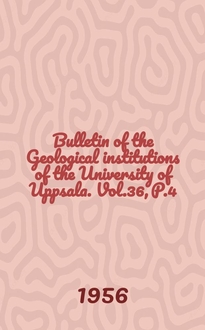Science Bulletins: Our Ancient Relatives Born with Flexible Skulls
A new study of the skull of an early hominin child provides a better understanding of the evolutionary timeline for modern human skulls-and brains. The skulls of ...
American Museum of Natural History
Science Bulletins: Mapping Emotions in the Body
Feelings are often associated with physical reactions: terror can send chills down your spine, and love can leave you weak in the knees. A recent study has ...
American Museum of Natural History
Science Bulletins: The Ecology of Climate Change
The boreal forest, which stretches across northern latitudes just south of the Arctic Circle, is a key region for studying climate change—and not just the impacts.
American Museum of Natural History
National Museum for Natural History officially opens today
The National Museum for Natural History officially opens today to the public! Here's a sneak peek.
Manila Bulletin Online
Science Bulletins: Invasive Species
It's war in many ecosystems around the world as invasive and native species battle for primacy. Facing the increased exchange of ship ballast water among ...
American Museum of Natural History
Nature's Fury: The Risk Beneath Bangladesh
Follow geologists as they map a significant fault near the capital of Bangladesh and study how an earthquake on that fault could cause a river to shift ...
American Museum of Natural History
Science Bulletins: Learning from Lyme
Since its discovery in 1975, Lyme disease has become one of the most commonly reported diseases transmitted by insects, spiders or other arthropods.
American Museum of Natural History
How Many Mass Extinctions Have There Been?
Thanks to Audible for supporting this video. Get your free 30-day trial at https://www.audible.com/minuteearth Thanks also to our Patreon patrons: Today I Found ...
MinuteEarth
Nature's Fury: On Shaky Ground - Learning from the Haitian Earthquake
Ten months after a magnitude 7.0 earthquake flattened huge sections of Port-au-Prince, Haiti, a team of geologists commissioned by the United Nations set out ...
American Museum of Natural History
Pterossauros - Posicionamento Filogenético e Exclusividades Anatômicas
Espero que você tenha gostado desse tour anatômico e filogenético. Para maiores esclarescimentos, não deixe de checar as referências deixadas na ...
Coelho Pré-Cambriano
Science Bulletins: Twitter Tracks Cholera Spread in Haiti
In the early stages of an epidemic, access to information about emerging cases is critical for health care workers trying to control the spread of disease. A recent ...
American Museum of Natural History
Science Bulletins: The Oil Spill's Other Victims
http://amnh.org/rc10 Beyond oil-coated pelicans, the Gulf spill imperils many lesser-known species such as marsh grasses, seaweed, and deep-sea ...
American Museum of Natural History
Science Bulletins: CT Scans Help Poached Rhinos
South Africa is home to more than 80 percent of Africa's remaining rhinoceroses, most of which live in national parks and reserves. But even in these protected ...
American Museum of Natural History
Science Bulletins: Bee Deaths Linked to Common Pesticides
Several recent studies have questioned whether exposure to common pesticides might be impairing bee performance and contributing to the observed ...
American Museum of Natural History
Science Bulletins: Lemurs of Madagascar—Surviving on an Island of Change
On the world's fourth largest island, and virtually nowhere else, lives an entire "infraorder" of primates: the three dozen or so lemur species. But Madagascar has ...
American Museum of Natural History
تدليسات "داوكنز" في محاضرته عن (أطلس الخلق) لـ"هارون يحيى" في مؤتمر المرتدين الإسلام
محاضرة داوكنز: Richard Dawkins on Harun Yahya's Atlas of Creation https://www.youtube.com/watch?v=Z167dmPT_zw “That is one of the big mysteries about ...
د. سامي عامري Dr. Sami Ameri
Science Bulletins: Making Medicine from Nature
Three cutting-edge medical technologies inspired by biodiversity. This Bio Bulletin snapshot is third in a series to celebrate the 2010 International Year of ...
American Museum of Natural History
Coelacanth Fish Fossil († Coelacanthus sharjah Khalaf, 2013) at Sharjah Natural History Museum, UAE
The Sharjah or Arabian Coelacanth Fish Fossil († Coelacanthus sharjah Khalaf, 2013) at Sharjah Natural History and Botanical Museum, Sharjah, Emirate of ...
Prof. Dr. Sc. Norman Ali Bassam Ali Taher Khalaf
Science Bulletins: Yellowstone—Monitoring the Fire Below
Three of the most catastrophic volcanic eruptions in geologic history occurred at a place now visited by nearly four million people a year: Yellowstone National ...
American Museum of Natural History
Nature's Fury: Yellowstone - Monitoring the Fire Below
The magma chamber responsible for Yellowstone's past volcanic activity still lies beneath, and continues to steam, heat, and shift the park landscape.
American Museum of Natural History
Science Bulletins: Jellies Down Deep
This Bio Bulletin, which features spectacular underwater footage, follows scientists at the Monterey Bay Aquarium Research Institute as they retrieve jellies from ...
American Museum of Natural History
Nature's Fury: Monitoring Mount Etna - Magma on the Move
Visit the volcano Etna's snowy slopes and learn how scientists from the Italian National Institute for Geophysics and Volcanology use data collection to predict ...
American Museum of Natural History
The History of Climate Cycles (and the Woolly Rhino) Explained
Learn more about Hack the Moon at https://wehackthemoon.com Check out Reactions's Summer of Space video on the Northern Lights!
PBS Eons
Science Bulletins: Brain Evolution—The Sweet Smell of Success
A good sense of smell may have contributed to the development of certain kinds of social functions in Homo sapiens, according to a new study. Scientists used ...
American Museum of Natural History
Science Bulletins: Acid Oceans
If youre an ocean creature with a hard shell—like a sea urchin, a hermit crab, or a coral polyp—you prefer ocean water with a pH of about 8.2. This chemistry ...
American Museum of Natural History
Science Bulletins: The Transit of Venus
For a handful of hours in June 2012, Venus's orbit carried it directly across the face of the Sun, providing a spectacular backlit view visible from Earth. Only six ...
American Museum of Natural History
Prehistoric Horrors Aka Dinosaur Models For Film (1967) | British Pathé
Watch as Arthur Hayward, a model maker at London's Natural History Museum, constructs model versions of dinosaurs for stop motion use in films such as 'One ...
British Pathé
Science Bulletins: New Blood Gives New Life to Florida Panthers
Endangered Florida panthers benefited from the introduction of Texan pumas in their ranks.
American Museum of Natural History
Science Bulletins: The Final Voyage of Enterprise
Shuttle Orbiter Enterprise was the first of NASA's space shuttles. Its original name, "Constitution", commemorated the United States Bicentennial in 1976, but a ...
American Museum of Natural History
Quantas extinções em massa existiram? | Minuto da Terra
Quais foram as extinções em massa que já atingiram o planeta Terra? E mais importante, quantas foram, afinal? Quer aprender mais sobre o assunto desse ...
Minuto da Terra
Massive Fire Destroys India's National Museum of Natural History
India's National Museum of Natural History has been gutted by an early morning fire in central Delhi. The fire broke out on the top floor of the FICCI building in ...
Mashable Deals
When Carnivores Took to the Water
AMNH scientist Camille Grohé studies the evolutionary history of aquatic carnivores, including otters, seals and sea lions. How and when did their land-dwelling ...
American Museum of Natural History
Science Bulletins: Underwater Microscope Zooms in on Tiny Marine Life
Most plankton are too small to be seen with the naked eye. But despite their size, they are vital in marine and freshwater ecosystems, serving as food for larger ...
American Museum of Natural History
Nature's Fury: Quakes from Space
In recent years, scientists have begun using satellite technology to study earthquakes from space. By monitoring the tiniest movements of the Earth's crust, they ...
American Museum of Natural History
Science Bulletins: Brown Widow Spiders Invade Southern California
In the last decade, brown widow spiders have made a home for themselves in parts of Southern California, a region once dominated by the more venomous ...
American Museum of Natural History
Non-stop 100: Massive Fire At National Museum of Natural History Building in Delhi
In 'Non-stop 100', watch top 100 news headlines on the go. A massive fire engulfed the 6-storey building of the National Museum of Natural History in Delhi on ...
Aaj Tak
Science Bulletins: Curiosity Rover Heads for Mars
The biggest and most technically advanced rover to date is on its way to Mars. In the latest Astro Bulletin from the Museum's Science Bulletins program, follow ...
American Museum of Natural History
The New Mexico museum of natural history...
Previous video: https://m.youtube.com/watch?v=pwlNHpmBTmM.
jeremiah verbeek
Скільки було масових вимирань [MinuteEarth]
Скільки ж масових вимирань було в історії життя на Землі? Текст читав Сергій Нечитайло. Підтримайте нас,...
Цікава наука
Science Bulletins: Deep-Sea Cephalopods Hide Using Light
Many kinds of octopus, cuttlefish, and squid are masters of disguise. They conceal themselves using chromatophores—specialized skin cells that hold pigment ...
American Museum of Natural History
Science Bulletins: Fire Ants Raise Brazilian Butterflies
When researchers in Brazil studied the early larval stages of the butterfly Aricoris propitia, they discovered that the larvae had solicitous caretakers—fire ants.
American Museum of Natural History
Science Bulletins: Monitoring Mount Etna—Magma on the Move
Scientists in Sicily are collecting an enormous amount of data to monitor moving magma inside Mt. Etna, one of the most active volcanoes in the world. Nearly a ...
American Museum of Natural History


























































